Today we’ll be taking a look at the Feeltech 12MHz DDS Function Generator (FY2100S), it’s function generator that can do square, sine and triangle waves with sweep plus it’s a 1Hz to 60MHz frequency counter. It seems to work reasonably ok however there is a bit of jitter. Once you go over 8-9MHz – square waves don’t look like they should and the sine / triangle waves look similar too.
Once I picked up the case, it was very light so there’s probably not a lot going on inside.
A few notches later and we’re in, this thing is pretty much empty with all the components being on the front panel – I might just remove the case and make a small back panel for it. We’ve got 5V input from USB, an MC34063 to invert the voltage to -6V (which gives us 12Vpp) and an AMS1117 3.3V LDO.
1. Altera MaxII CPLD
This CPLD has 192 macro cells, 80 I/Os and can operated at 304 MHz. We’ve got a 75MHz oscillator close by.
EPM240T100C5N
2. Unknown chip
No marking at all, looks like it would control the LCD.
3. Logic chip
A logic chip which is outputting its signal to the “TTL” output. I don’t think it’s a HC14 hex inverter schmitt trigger.
5A46 HC14
4. Ti Rail to Rail Opamp
130MHz bandwidth with 2.7V to 12.8V supply voltage support. Opamp output runs through to the “Out” connector after passing through the 20dB attenuator button.
LMH6643
I tested the 75MHz oscillator and it looks like that is possibly where all the jitter is coming from.
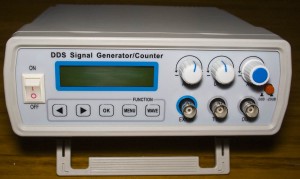
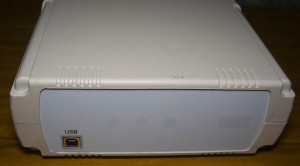
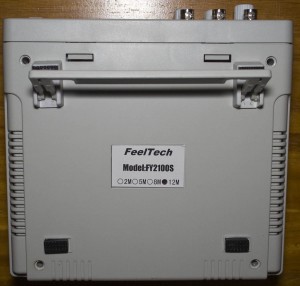
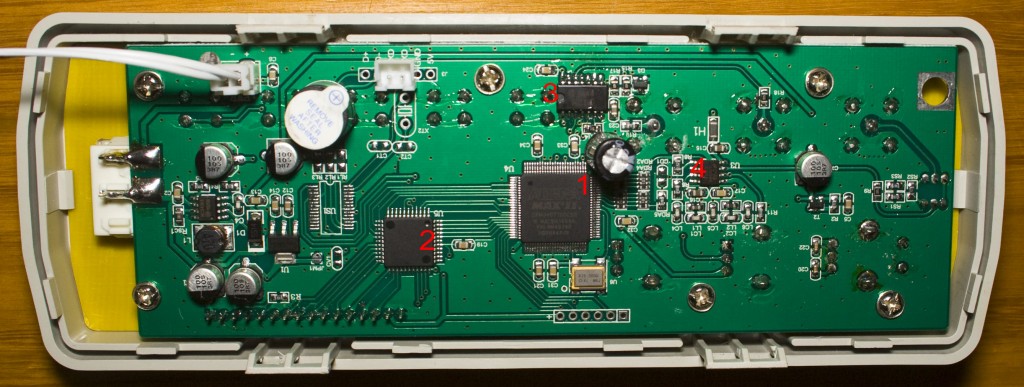
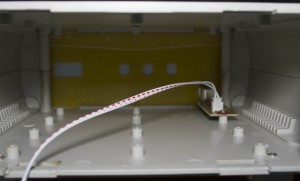
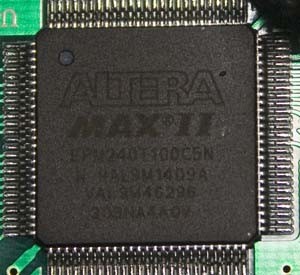
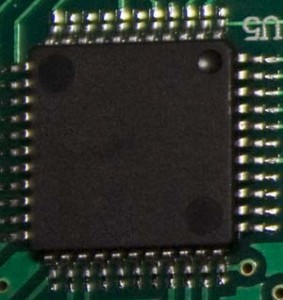
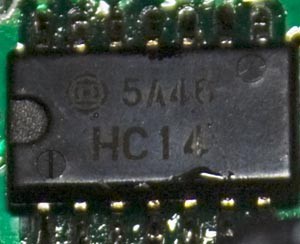
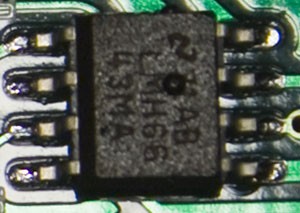
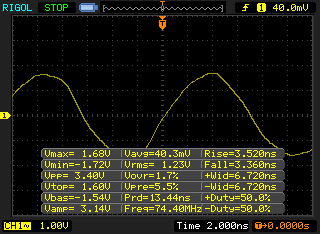





Hi. Thanks so much for posting this. Took me ages to find a pic of the inside of this thing. I’ve seen these on ebay but also saw the ones without the big case
https://www.google.co.uk/search?q=SGP1008S&tbm=isch
and I was wondering that these big cases might be just empty. So I was right. Single board solution, no point to buy the one in the big case. In a big case there is room for a better design, or it can be just a marketing tool to make something look more serious.
I bet the jitter is just aliasing. I think the waveform is not updated fast enough to generate a nice signal on high frequencies. Not sure about the sampling rate but if it is let’s say 50MHz then a 10MHz signal is made up of 5 points! Which also means a 9.5MHz square wave will be made of one 9 points long period followed by a 10 points long period. That is a huge jitter! All right, there are some sophisticated anti-aliasing algorithms and filters out there but it seems they may not be not implemented in these devices.
On a youtube review of a similar (electronically probably identical) device someone said it isn’t worth buying one over 2Mhz because of the jitter and distortion.
https://www.youtube.com/watch?v=KArRNJFDmps
Still not sure what to buy but definitely not a big empty box. 🙂
The mhs-2300a gets good review but much more expensive.
Anyway, thanks for the post again.
Do you know where I can get a manual?
Can’t find the function to adjust/start the sweep…
Hi Markus,
Sure, here’s the manual which I found from an Ebay listing – https://www.insidegadgets.com/wp-content/uploads/2015/06/FY21xxS-User_s-Manual_V2_2.pdf
I’m wondering if anyone found a way to get a trigger signal output for the sweep generator function. I cant find any way to trigger an oscope using thr sweep generator
Thank you for purchasing our product. This is Carl from FeelTech. I’m a common staff and not an engineer. But I have all the English data about our products. We have many models about signal generator. Most are cheap because of our market locating target. It doesn’t mean our product is not good or our technology is limited. we have already povided total solutions of high end signal products for many famous instrument corporations. In other words, When you buy a signal generator of over $300,the inside part may be designed by us. Most of my colleagues are engineers. We are not good at marketing. R&D is what we are good at. So if you need any question or need any help, we are quite willing to help you.My email is muhu”at”163.com, my cell phone is 008615890618876. By the way, the picture showed above is our fy2100 series. It was sold $30~$45 in China market. The case is empty because of chinese customers’ consumption concept. Please contact me anytime. Thanks.
Looks like your unit does not have an integrated PSU?
Mine has, with a jack for a mains cable connector. Perhaps that’s why the case is that big. It’s shared between mains powered and USB powered.
I guess the depth of the case could still be 1/3 of what it is, but I haven’t opened mine.
Given that there is a fold-out foot under the front such that the device will, given its depth, point slightly up at a comfortable angle and stands quite stably that way, I guess making it less deep would not be desirable.
Found a way to get a trigger signal output for the sweep generator function.
Ch 1 square wave with it’s frequency set at the sweep period.
Ch2 is the sweep signal.
Use Ch 1 to trigger the scope.
Is there a way of setting frequences for an AM signal?
If not, is it a problem connecting both channels (one with carrier and the second with audio) to the same test point?
I was able to create an AM modulated signal by tuning CH1 to the carrier frequency, then tuning CH2 to .4 KHZ higher. Outputs were combined. The amplitude of CH2 was set to 1/3 the amplitude of CH1. The this resulted in an AM signal with audio at 400 cycles/sec.
I was using this unit with tube radios and soon found out that even the low voltages in these radios are too high for this generator and can easilly burn out the circuits.